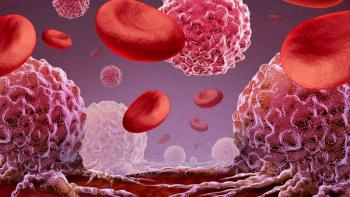
July Blood Cancer Highlights: Top 5 Updates Patients Should Know
Key Takeaways
- Lynozyfic received FDA accelerated approval for relapsed/refractory multiple myeloma, showing a 70% response rate in trials, but carries a boxed warning for severe side effects.
- CAR T-cell therapy is being explored for myelofibrosis, aiming to enhance T-cell ability to target and destroy cancer cells.
As July concludes, the landscape of hematologic oncology continues to evolve, with notable progress in multiple myeloma, myelofibrosis, and CLL.
As July concludes, the landscape of hematologic oncology continues to evolve, with notable progress in multiple myeloma, myelofibrosis, and chronic lymphocytic leukemia (CLL) research. Recent FDA actions, clinical trial data, and real-world insights highlight steps forward for patients.
Developments like U.S. Food and Drug Administration (FDA) approvals and regulatory decisions, as well as clinical trial updates, reflect a continued push toward more personalized and effective treatment for patients with blood cancers.
Read on for more insights from the front lines of hematologic research and care.
FDA Approves New Treatment Combo in Myeloma
The U.S. Food and Drug Administration
Due to the risk of life-threatening side effects, like including cytokine release syndrome (CRS) and immune effector cell-associated neurotoxicity syndrome, Lynozyfic carries a boxed warning and is available only through a restricted Risk Evaluation and Mitigation Strategy program. The drug’s step-up intravenous dosing schedule is followed by a maintenance regimen that may be reduced with sustained response.
Lynozyfic also received orphan drug and fast track designations, further supporting its expedited development for a population with significant unmet medical need.
How is CAR T-Cell Therapy Used in Myelofibrosis?
T cells are a natural part of the immune system that help fight infection and cancer, but in blood cancers such as lymphoma, they may fail to eliminate malignant cells. To address this unmet need,
“We all have T cells in our blood. These T cells are part of our natural, native immune system; they are meant to protect us against infections and cancers. However, when a patient has a cancer like lymphoma, it means the T cells have not properly done their job of eliminating that malignancy. This new method is a way of weaponizing T cells,” Dr. Matthew Ku said in an interview with CURE.
Ku, a clinical and laboratory hematologist, is a professor and lymphoma stream lead at St Vincent’s Hospital, where he is also the principal investigator on multiple important clinical trials. He is a member of the Australasian Lymphoma Alliance, the Australasian Leukemia & Lymphoma Group and the American Society of Hematology.
Ongoing studies aim to further refine personalized strategies by linking clinical and genetic patterns in diseases like myelofibrosis to future treatment approaches.
Cytopenia Linked to Lower Survival in Myelofibrosis
Cytopenia at diagnosis was
“Understanding risk factors for poor prognoses and how to appropriately tailor Janus kinase inhibitor treatment selection for patients with myelofibrosis who are ineligible for transplant is clinically important,” wrote lead study author, Dr. Lindy Rein, and colleagues in the abstract of the study.
Rein is an associate professor of medicine at Duke University, a member of the Duke Cancer Institute, and a researcher in hematologic malignancies and cellular therapy.
Further research is needed to determine how targeting cytopenia may influence survival, AML progression and transplant eligibility.
How to Establish Comfort in the Chemo Lounge
This first-person account details the physical and emotional toll of treatment, from infusion side effects and pacing the floor due to back pain and restlessness, to finding comfort in familiar faces among the oncology team.
FDA Votes Against Treatment Combo in Myeloma
During a regulatory meeting held on July 17, the FDA Oncologic Drugs Advisory Committee
Although both combinations demonstrated improved progression-free survival in phase 3 trials, the committee raised concerns about high rates of ocular toxicity, unresolved dosing questions, and lack of trial diversity.
The majority of participants were from outside the U.S., with limited representation of older adults and Black patients, leading to doubts about the applicability of results to U.S. clinical practice. Overall, the ODAC ultimately concluded that the safety profile at the proposed dosages did not justify approval at this time.
“This was a challenging decision because the efficacy data were strong, but the toxicity data were also very strong… We've heard impassioned testimonials from key opinion leaders and from many researchers in the myeloma community. All of the building blocks are here to explore this question in the future, from patients to researchers to physicians,” Dr. Neil Vasan, a medical oncologist at NYU Langone, explained on why he voted against both drug combinations.
References
- “FDA grants accelerated approval to linvoseltamab-gcpt for relapsed or refractory multiple myeloma” by U.S. Food and Drug Administration. July 2, 2025.
- “Cytopenia is Associated with Real-world Disease Progression and Diminished Survival In Patients With Myelofibrosis: Analysis of a Us National Administrative Claims Database,” by Dr. Lindsay Rein, et al. Presented at the 2025 European Hematology Association (EHA), Milan, Italy; June 12–15, 2025.
- Meeting of the Oncologic Drugs Advisory Committee (ODAC). FDA. Accessed July 17, 2025.
https://www.youtube.com/live/CLhBI3UXWyg
For more news on cancer updates, research and education, don’t forget to





